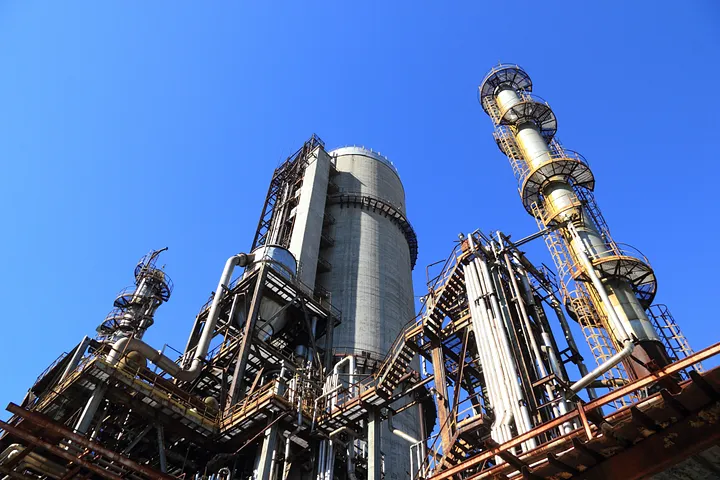Extending the use of AI in Incident Management in the workplace revolutionizes workplace safety through the support of detection, reporting, and evaluation of risks. Thus, using a large amount of data, AI can produce immediate reactions to an instance, which increases security and compliance with the regulations.
This technology reduces the probability and exposure of risks on human resources and external factors, centralizes safety procedures, and enhances effective efforts and preventive culture. Now, let us dive into how safety incident management systems are being transformed by AI.
Let’s get into how AI is revolutionizing safety incident management systems.
What is AI in Incident Management?
Through the use of technologies, AI in incident management improves how incidents are perceived, reacted to, and prevented within an organization. It gathers real-time and third-party data to detect events that need to be addressed and gives grouped alerts with valuable information.
AI incident allocation to the right teams requires less time than traditional approaches, and it maps actual causes in real-time analysis. Through accurate interpretations of the future activity volume and recurring patterns, AI decreases response times and improves analyses of root causes, preventive safety, and operational readiness for various contexts in corporate IT landscapes and workplaces.
Interested in enhancing safety and ensuring compliance? Discover our process safety management services now!
How AI Enhances Safety Incident Management?
Leaders of manufacturing and industrial firms can realize value from AI and Machine Learning in the way safety incident management is being delivered and improved. These technologies use past data to forecast mishaps, rank dangers, and demystify processes. For instance, with AI, repetitive processes such as categorizing safety incidents, duplicate record removal, and inspections are completed automatically. That is why, after audits, it can recommend the next steps, determine the causes, and propose corrective measures.
Integrated IoT devices monitor safety risks and construct safety solutions in real-time, using ideas from artificial intelligence. Risk factors include equipment breakdowns or potential risks arising from employee tiredness, which are detected in advance by predictive analytics.
The future of safety management with AI lies in continuous learning and adaptation. While not replacing humans, AI augments safety professionals by efficiently analyzing data, enhancing situational awareness, and driving smarter decisions. As adoption grows, AI promises safer workplaces through precision, innovation, and a proactive approach to risk management.
Key Features of AI Incident Management Systems
AI-powered incident management systems transform how organizations handle incidents by streamlining processes, enhancing efficiency, and reducing response times. Here are their key features –
Incident Response Playbook
AI-driven systems create dynamic playbooks to guide teams through incident resolution, offering step-by-step instructions tailored to the issue. This ensures consistency and reduces response time.
Incident Routing
AI automatically assigns tasks to the most relevant teams by analyzing incident details, reducing delays, and ensuring that the right experts address issues.
Root Cause Analysis (RCA)
AI tools trace incidents to their origin, uncovering patterns and causal links. This simplifies the RCA process, enabling quick identification and resolution of underlying problems.
Incident Closure
AI ensures a seamless closure process by verifying that all corrective actions are implemented and documented, enhancing accountability and compliance.
Prioritization
AI evaluates the severity of incidents and prioritizes them based on risk, ensuring critical issues are addressed first, thus minimizing impact.
Automatic Notification
Real-time notifications alert stakeholders about incidents, updates, and resolutions, improving team communication and collaboration.
Faster Resolution
AI reduces Mean Time to Resolution (MTTR) by automating repetitive tasks, improving response efficiency, and ensuring timely interventions.
Implement Automation
Automation simplifies workflows, such as ticket generation, data collection, and status updates, freeing up resources for strategic tasks.
Forecasting
AI forecasts potential incidents using predictive analytics, enabling proactive measures to prevent disruptions and improve workplace safety.
Discover how Ingenero leverages AI applications in oil and gas industry – Contact us now!
Benefits of AI in Safety Incident Management
AI is transforming safety incident management by improving efficiency, reducing risks, and ensuring better outcomes. Below are the key benefits:
Continuous Safety Monitoring
AI systems provide real-time surveillance of workplace environments, enabling immediate detection and response to safety concerns as they arise. This continuous monitoring ensures that no safety issue goes unnoticed, allowing for prompt corrective actions.
Anticipating Risks with Predictive Analytics
By analyzing historical and current data, AI predicts potential hazards, empowering organizations to take preemptive action and reduce incident likelihood. Predictive analytics helps prioritize risks and allocate resources more effectively to prevent accidents.
Advanced Hazard Identification
AI leverages image recognition and data analysis to pinpoint hidden or overlooked dangers, improving workplace safety comprehensively. By identifying risks that may not be visible to the human eye, AI ensures a more thorough and proactive safety approach.
Personalized Safety Training Insights
AI tailors training programs by analyzing worker behavior and incident patterns, ensuring employees receive relevant, impactful safety education. This individualized approach boosts worker engagement and improves overall safety awareness in the workplace.
Real-Time Worker Safety Insights
AI-enabled tracking monitors employee movements, fatigue, and stress levels, promoting timely interventions to safeguard worker well-being. This real-time data ensures that safety teams can act swiftly to protect employees from potential risks or health issues.
How is Ingenero Leading the Change?
At Ingenero, we offer advanced solutions like incident reporting software and safety inspection software that enhance safety and mitigate risks, especially during challenging economic times. As industries face cost-cutting pressures, particularly in the process sector, safety risks can often be overlooked, putting both personnel and operations at risk. We help companies maintain robust process safety management, ensuring compliance and operational safety even amidst financial challenges.
With over 1.1 million man-hours of experience, our team of experts identifies and addresses critical safety deficiencies, particularly in relief system design, where up to 40% of systems may have design flaws that compromise safety. By providing comprehensive risk assessments, relief system engineering and safety consulting, we ensure the reliability and safety of essential systems.
Our services include HAZOP, HAZID, and QRA studies, which help identify hazards and quantify risks, allowing organizations to prioritize safety actions. Our proactive approach and safety incident software enhance overpressure protection and minimize the potential for hazardous incidents, safeguarding both assets and workers. With our support, organizations can continue to operate safely, even under economic strain.
Explore more about our tailored solutions:
Predictive Maintenance Solutions
Engineering consulting services
Conclude
AI is transforming safety incident management by automating detection, reporting, and risk assessment. It enables proactive responses, improves decision-making, and simplifies workflows. With features like real-time monitoring and predictive analytics, AI enhances safety, reduces risks, and ensures faster resolutions, fostering a culture of proactive safety and compliance across industries.




